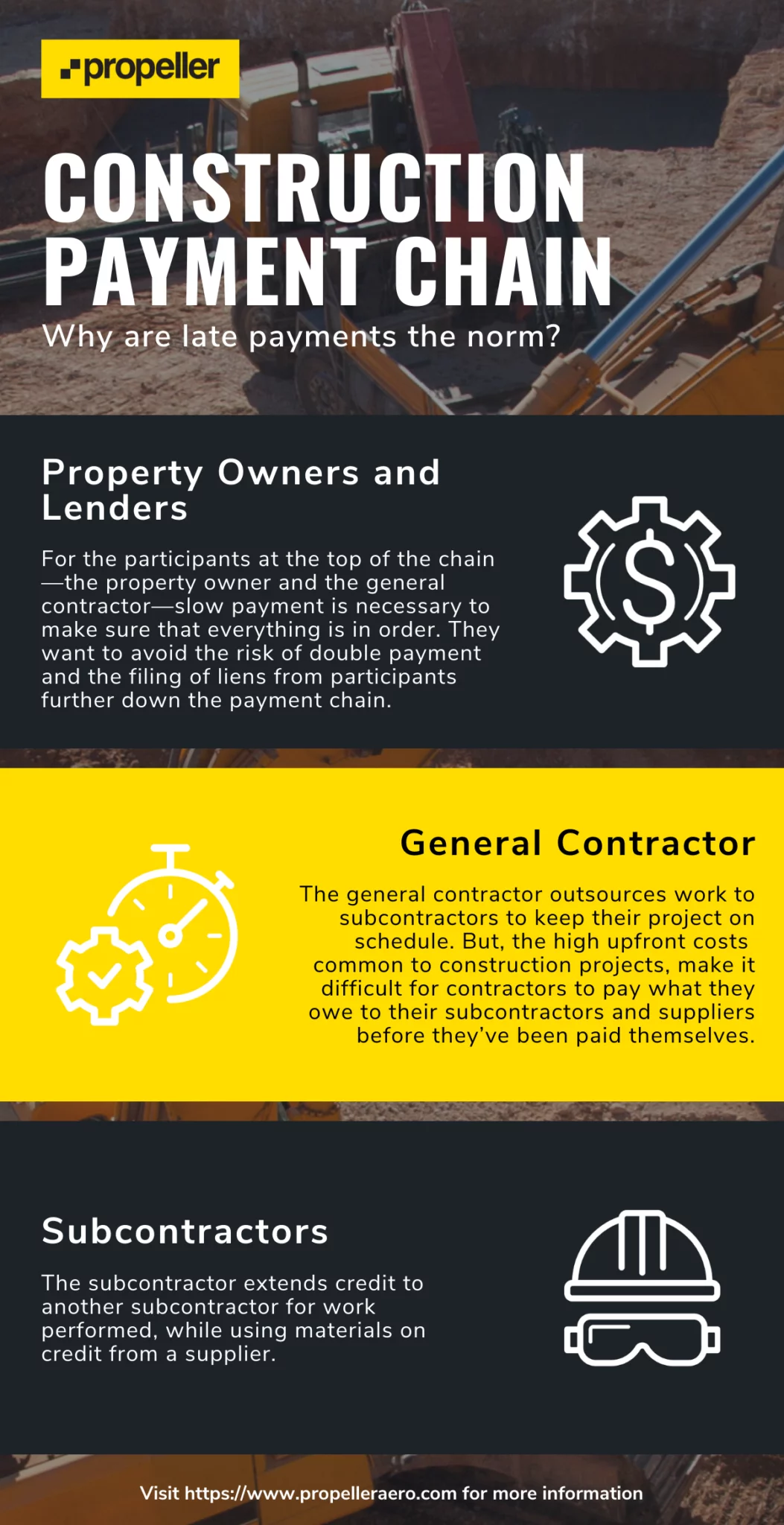Why Are Late Payments the Norm in Construction? Reasons and Solutions
Here’s where we’re going if you want to jump ahead:
The construction industry and late payments—name a more iconic duo. Late payments have plagued the industry for such a long time that many think of it as the norm.
Good news: it doesn’t have to be the norm if we add digital solutions into the mix.
A recent study on payment security commissioned by the Australian government found that 72% of subcontractors in the architectural, engineering, and construction space received late payments on 40% of the invoices they sent out.

On top of being delayed, 44% of respondents reported that, on average, their invoices remain unpaid for more than 30 days after the agreed upon due date.
In every business, cash flow is king. Without a prompt and steady stream of cash, businesses can’t fulfill financial obligations, make payroll, and fund growth. So how did late payments become the norm in the construction industry? The answer lies in the industry’s outdated billing procedure.
Rethinking an outdated payment structure
The root cause of the industry’s slow payment issues is the complex (and largely manual) construction billing procedure that contractors have been using out of necessity.
The payment chain in a typical construction project consists of the property owner and lenders at the top, followed by the general contractor, which is then followed by a series of subcontractors, and finally, the material suppliers at the bottom. Because of the length of construction projects, it is necessary that all stakeholders depend on credit to transact for labor and material supplies.
For instance, a subcontractor extends credit to another subcontractor for work performed, while using materials on credit from a supplier. In other words, it’s a system largely dependent on trust.
The high upfront costs and razor-thin margins common to construction projects, make it difficult for contractors to pay what they owe to their subcontractors and suppliers before they’ve been paid themselves. The result? Everyone has to wait to get paid until job requirements are met and obligations are fulfilled.
For the participants at the top of the chain—the property owner and the general contractor—slow payment is necessary to make sure that everything is in order. They want to avoid the risk of double payment and the filing of liens from participants further down the payment chain.
How do we address late payments? The current payment system of the construction industry may not change any time soon. However, there are some ways that can help manage late payments and streamline the billing procedure. Here are some of them.
1. Use digital invoicing and payment solutions.
We all know construction is lagging in digitization, and often skeptical of technological intervention. Although this opposition is warranted at times, especially as construction tech is still maturing, a lot of productivity is lost to repetitive manual tasks.
Without automation, invoicing paperwork and waiting for payment approval absorbs an enormous amount of bandwidth that would be better spent on other tasks. Using digital invoicing and payment software solutions help streamline the entire process and ensure contractors get paid faster.
2. Strengthen contract language and specify payment due dates.
There is no document that can ensure that a client pays on time. However, a well-crafted contract will eliminate any confusion about the payment terms and help enforce your payment rights.
The contract should specify the scope of the work to be done, the payment schedule, and legal repercussions of late payments.
3. Protect payment rights using the mechanics lien.
If a construction client fails to pay, contractors can file a mechanics lien on the property. The mechanics lien is a legal remedy that lets a claimant put a claim on the property for unpaid work.
If the contractor remains unpaid, enforcing the lien will result in property foreclosure, and the proceeds of the sale will be used to pay the debt.
Protect Your Payment Rights
Late payments are an endemic issue that stems from the fundamental structure of the construction payment process. Getting paid on time can be challenging for contractors, especially those at the bottom of the payment chain.
What should you do to address these payment issues? The best way for firms to tackle late payment is through good payment practices, creating solid contracts, streamlining the payment process, and promptly chasing unpaid accounts.
Go to your books and check your current client accounts to see if there are some that are in danger of being delinquent. Familiarize yourself with the worker’s lien process as well as the specific laws provided by your state. More importantly, look for a dedicated software solution that can help you track lien deadlines so you never lose your payment rights.






